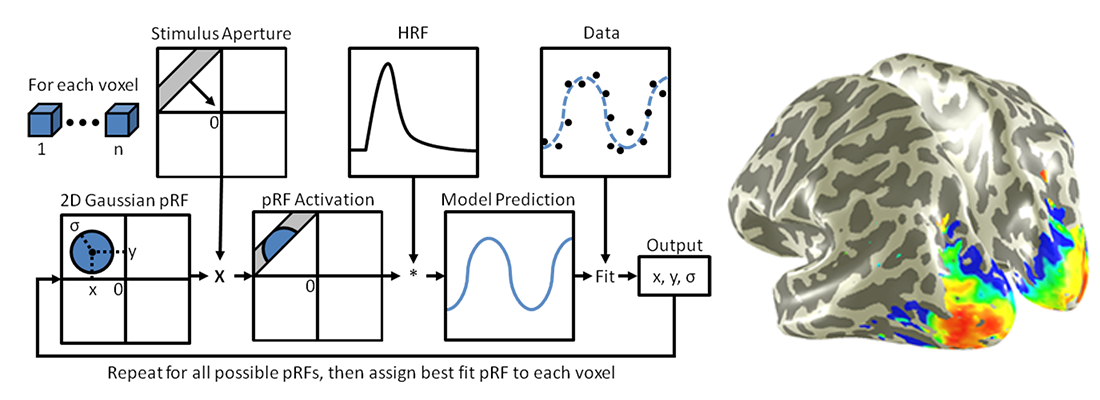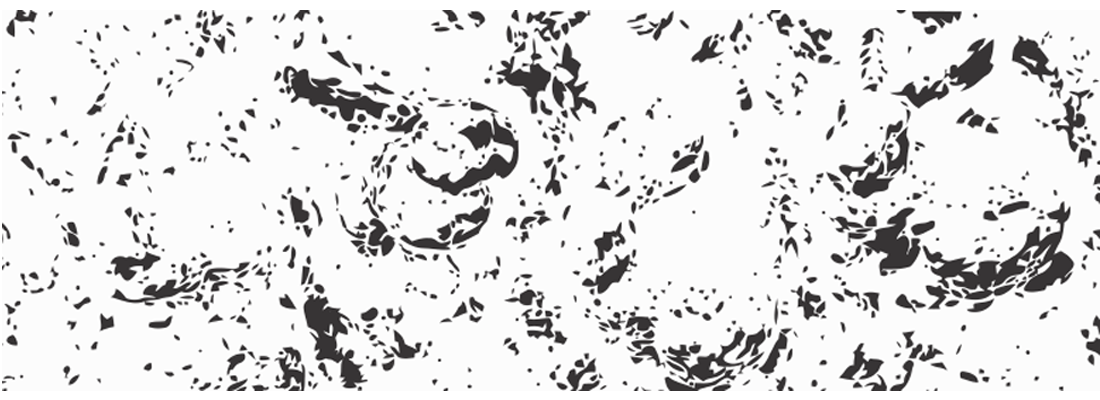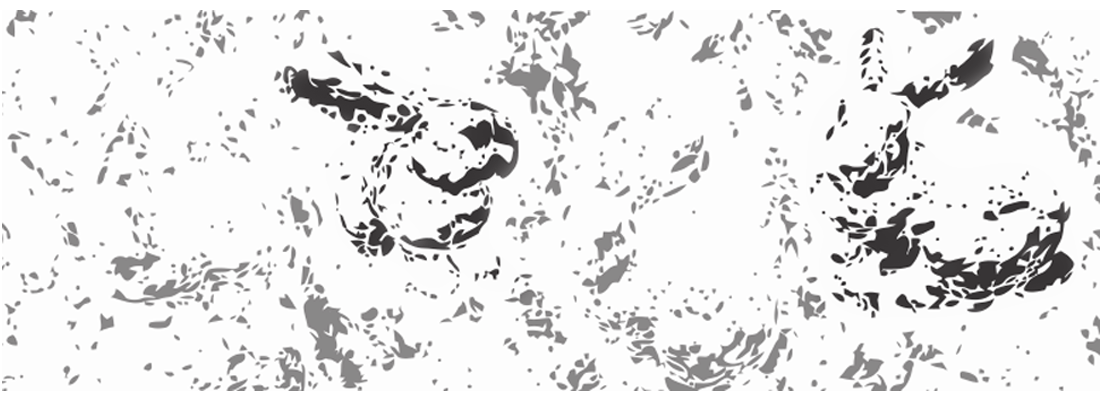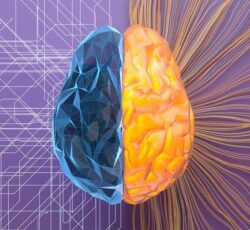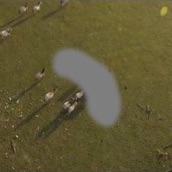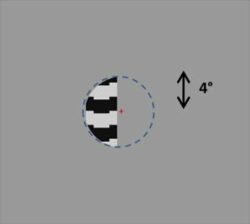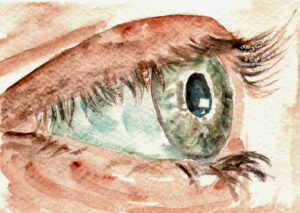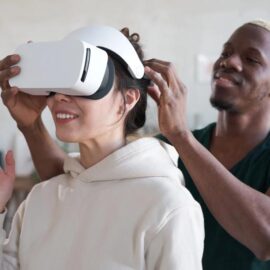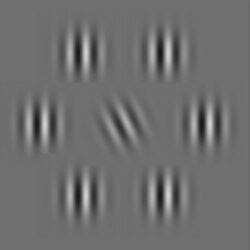What explains that we have two brains in one?
The two hemispheres of the brain process information somewhat differently. In other words, we have two brains in one, a phenomenon referred to as “brain lateralization”. Can a single unifying principle explain all the instances of brain lateralization? In a … Continued
Grant for new eye tracking equipment
The UMCG awarded the Laboratory of Experimental Ophthalmology a grant (€20.000) that will enable it to buy new eye tracking technology. Specifically, it will allow us to buy the Pupil Invisible, a system that promises calibration free eye tracking, as … Continued
Imaging nerve breakdown
Assessing the integrity of the optic nerve (ON), the first section of the neural wiring between the eye and the brain, is important in ophthalmology for diagnostic purposes and follow-up. Commonly, this is done using optical coherence tomography (OCT), yet … Continued
Go with the flow!
Can the directionality of BOLD activity, as measured using fMRI, provide meaningful information at a very fine scale? In a recent paper, published in the journal Cerebral Cortex, Nicolas Gravel and colleagues show that it does. Using advanced models, they … Continued
Outward bound receptive fields
Does having a visual field defect affect the representation of the visual world in the human brain? In a paper in the journal “Neuroimage”, Gokhul Prabhakaran and colleagues report that it does. Using fMRI, they find that neurons in the … Continued
The eye exam of the future?
Can an eye exam become literally as simple as watching a movie? In a recent paper in the Journal of Vision, Birte Gestefeld and colleagues show that the idea is perhaps not that far fetched. Based on the eye-movements made … Continued
Eyes on emotion
The majority of emotional expressions used in daily communication are multimodal and dynamic in nature, but relatively little is known yet about how we adapt our perceptual strategies to the presence or absence of certain information. In a recent paper … Continued
Follow that car, eh, dot!
What if an eye health exam could become as simple as following a moving and jumping dot on a screen for a few minutes? In a paper in the journal “Frontiers in Neurology”, Alessandro Grillini and co-authors show that the … Continued
EGRET finale on Sept. 8th
Another great European Training Program is nearing its end. To celebrate and highlight the achievements, we will hold an (on-line) symposium. To register, visit the egret website.
Extent matters
Using fMRI to determine the presence of actual cortical reorganization following ocular or cortical lesions requires being aware of many potential pitfalls. In a recent paper in the journal “Neuroimage”, Gokul Prabhakaran and co-authors report on one more such an … Continued
GLANCE Project of Dilce Tanriverdi Receives Funding to Study Visual Crowding under Low-Light Conditions in Glaucoma
People with glaucoma often struggle to see in dim lighting, but standard vision tests don’t always capture these everyday challenges. One overlooked factor may be visual crowding. Visual crowding, which is the difficulty... READ MORE
Mind your ‘stip’!
There is a need for simpler methods to assess sensitivity at different visual field locations. In a recent paper in the journal Translational Vision Sciences and Technology, Anne Vrijling and colleagues show that... READ MORE
[Position filled] PhD in the “Virtual Reality for enhanced Visual Rehabilitation” (VR4eVR) project
Our research project “Virtual Reality for enhanced Visual Rehabilitation” (VR4eVR: say ‘VR forever’) aims at finding out how virtual reality (and fMRI) may facilitate visual rehabilitation for hemianopia, which may be necessary after... READ MORE
Daily life vision captured in a ‘flower’
Visual crowding shows that it is harder to recognize objects when these are surrounded by similar objects, such as in a cluttered environment. The phenomenon has relevance in various ophthalmic and neurological disorders.... READ MORE
